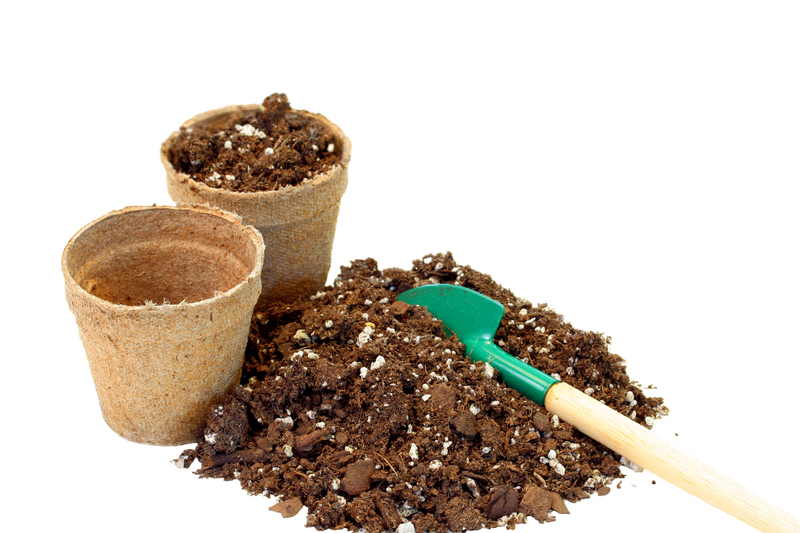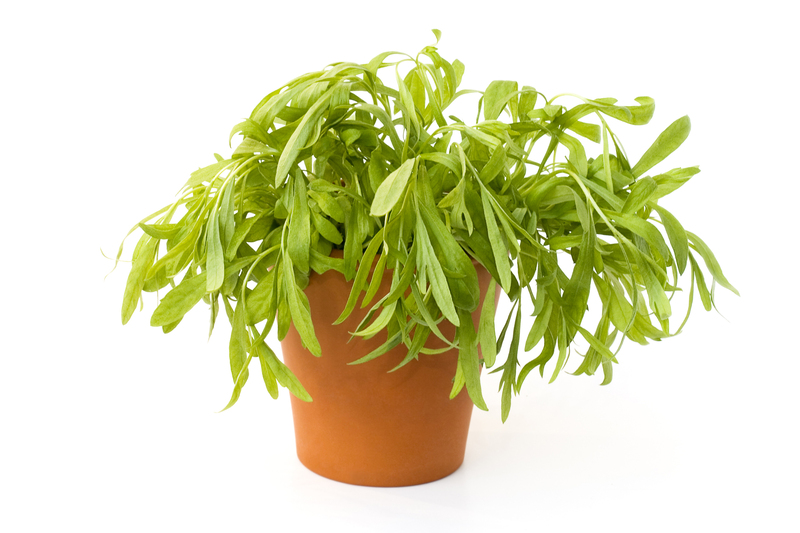Exploring the Craft of Hedge Trimming Shapes and Styles
Posted on 26/08/2025
Exploring the Craft of Hedge Trimming: Shapes and Styles
Hedges are more than just boundaries or privacy screens; they are a statement of your landscape's character and your own creative expression. Learning how to master hedge trimming shapes and styles allows you to transform any green wall into a living work of art.
Introduction to Hedge Trimming
Hedge trimming has a rich heritage, combining both horticultural science and artistic design. Whether in residential gardens, public parks, or grand palace grounds, manicured hedges have long been used to create visually stunning outdoor spaces. In this article, we'll delve deep into the craft of hedge trimming by examining a variety of shapes and styles. We aim to provide a comprehensive, SEO-optimized resource for green-thumbed beginners and seasoned gardeners alike.

The Importance of Hedge Trimming in Landscape Design
The artful maintenance of a hedge has both aesthetic and practical benefits:
- Curb Appeal: Beautifully trimmed hedges increase property value and enhance your home's visual appeal.
- Garden Structure: Well-shaped hedges define spaces, create outdoor rooms, and provide necessary contrast to free-form planting beds.
- Plant Health: Regular trimming encourages denser growth, healthier foliage, and helps manage pests and diseases.
- Privacy and Protection: In addition to looks, hedges serve as windbreaks, noise barriers, and wildlife habitats.
What Makes Hedge Trimming an Art Form?
Hedge shaping and styling demand a blend of technical knowledge, patience, and creativity. Topiary art, the ultimate expression of hedge trimming, has its roots in Roman times and evolved with European garden traditions.
Today, the possibilities are endless. Simple lines can evoke serenity, while elaborate geometric designs spark curiosity and awe. Whether you wish to create a stately avenue of formal cones or a playful series of animal sculptures, hedge trimming shapes and styles are only limited by your vision and the type of plants you use.
Essential Tools and Techniques for Hedge Trimming
Before embarking on your hedge sculpting journey, gathering the proper tools is crucial. Here's a concise checklist:
- Manual Hedge Shears - Ideal for detailed, precise cuts.
- Electric or Battery-Powered Trimmers - For quick, uniform cuts, especially on long or tall hedges.
- Loppers and Pruning Saws - For thicker branches and formative pruning.
- String Lines and Stakes - Essential for keeping edges and shapes straight and symmetrical.
- Protective Gear - Gloves, goggles, and sturdy footwear for safety.
Technique Tip: Always start trimming from the bottom up and outside in, ensuring you don't overcut one area.
When Is the Best Time for Hedge Trimming?
When you trim your hedges will affect their health and longevity. As a general rule:
- Evergreens: Trim late spring and again in late summer if necessary.
- Deciduous hedges: Trim in summer, usually after their initial flush of growth.
- Flowering hedges: Trim immediately after flowering to avoid removing next year's buds.
Pro Tip: Avoid trimming during extreme heat or drought, as this can stress your plants.
Popular Hedge Trimming Shapes
1. The Formal Rectangle
This classic hedge trimming style is the hallmark of architectural gardens. The aim is to create sharp, straight lines and flat surfaces. Rectangle-shaped hedges, such as those seen in English or French formal gardens, serve as robust, stately dividers along driveways, property boundaries, or garden beds.
- Plant types: Yew (Taxus), boxwood (Buxus), privet (Ligustrum)
- Maintenance: Requires regular, precise trimming for best results.
2. Rounded or Dome Shapes
Rounded hedges provide a softer, more organic silhouette. This style is popular for individual shrubs, courtyard plantings, and as accents in mixed-border gardens. Spherical shapes or domes add rhythm and harmony, making them ideal for casual or cottage gardens as well as minimal, contemporary landscapes.
- Plant types: Boxwood, laurel, holly
- Maintenance: More forgiving than rectangles, but regular shaping helps avoid lopsidedness.
3. Conical and Pyramid Shapes
Cones and pyramids are traditional forms in European gardens, especially to create focal points or line formal walkways. Maintaining symmetry is the key challenge. For beginners, starting with a string guide helps create smooth, even tapers.
- Plant types: Yew, leylandii, privet
4. Archways and Tunnels
Hedge archways create magical entrances or link different parts of your garden. Overlapping hedges can form tunnels--these require patience for proper growth and support during formative years, but they're unmatched in their storybook appeal.
- Plant types: Hornbeam, beech, privet, yew
5. Topiary Art & Animal Forms
If you want your garden to truly stand out, topiary designs offer limitless creative potential. You can sculpt spirals, animals, geometric shapes, and even whimsical figures with practice and planning. This style requires regular attention but yields stunning, personalized results.
- Best plants: Boxwood, yew, myrtle
- Required skills: Patience, an eye for symmetry, and willingness to experiment
Choosing the Right Hedge for Your Style
Not every plant is suitable for every desired shape. Here are key factors to consider:
- Growth Habit: Dense, fine foliage and a multi-stemmed structure work best for most shapes.
- Growth Rate: Faster-growing species need more frequent trimming, while slower growers retain their shape longer.
- Hardiness: Ensure the chosen hedge will thrive in your local climate and soil conditions.
Top Five Hedge Varieties for Trimming
- Boxwood (Buxus sempervirens): Ultimate for topiary and small hedges; slow-growing and dense.
- Yew (Taxus baccata): Classic for large, formal hedges; survives heavy pruning.
- Privet (Ligustrum vulgare): Fast-growing, adaptable, great for boundary hedges and arches.
- Laurus (Laurel): Large, glossy leaves for informal or privacy screens.
- Hornbeam (Carpinus betulus): Holds leaf shape well and tolerates severe cuts; ideal for arches and tunnels.
Steps for Achieving Perfect Hedge Trimming Styles
Step 1: Define Your Vision
Assess your garden's needs. Do you want formal lines, playful forms, or a living sculpture? Consider the hedge's purpose--privacy, accent, or guide--and choose a shape that complements your landscape's character.
Step 2: Select the Right Tools
Match your tools to the type and maturity of your hedge. Young, flexible shoots can be shaped with shears, while mature wood may require loppers or saws. String lines and wooden stakes help keep things level and symmetrical.
Step 3: Prune with Precision
- For straight edges: Use string lines and clip along them, moving slowly for an even finish.
- For curves and spheres: Step back often to check for symmetry from all angles.
- For topiary: Work in small increments, regularly stepping back and adjusting for balance.
Remember: Less is more. You can always trim more, but you can't reattach cut branches.
Step 4: Regular Maintenance
Frequent light trims encourage denser foliage and crisper shapes. Remove dead, diseased, or wayward branches promptly to keep hedges healthy and beautiful.
Step 5: Mulching and Feeding
Healthy hedges are easier to shape. Mulch around the base to retain moisture and suppress weeds, and use a slow-release fertilizer in spring for vigorous growth.
Tips for Advanced Hedge Shaping and Topiary Art
- Start Simple: Begin with a basic shape and progress gradually to more complex forms.
- Use Templates or Wire Frames: For intricate topiary, wire frames provide guides for accurate, symmetrical sculpting.
- Be Patient: Some shapes may take several years of formative pruning to achieve their final look.
- Study the Masters: Visit botanic gardens or research famous topiary artists for inspiration.
Innovative Hedge Trimming Styles for Modern Gardens
Today's gardens blend tradition with innovation. Here are trends and ideas for contemporary landscapes:
- Cloud Pruning: Inspired by Japanese niwaki, this style shapes hedges into rounded, cloud-like clusters.
- Minimalist Blocks: Create dramatic, boxy outlines for a modernist statement, especially with yew or privet.
- Mazes and Labyrinths: Large properties can incorporate maze-like patterns for a playful or meditative effect.
- Living Sculptures: Abstract forms, spirals, and even text can be achieved with patience and creativity.
Maintaining Your Masterpiece: Long-Term Care
Consistent care is key to sustaining intricate hedge trimming styles. Here's how to keep your hedges healthy and looking their best year-round:
- Watering: Deep-soak young or newly shaped hedges during dry spells.
- Feeding: Annual application of compost or organic fertilizer keeps plants robust.
- Disease Watch: Monitor for pests or diseases such as boxwood blight or aphids, and treat early to prevent spread.
- Repair: If shapes are accidentally damaged, use formative pruning and patience to restore lines over time.
Benefits of Professional Hedge Trimming Services
While DIY hedge trimming is rewarding, certain hedge shapes and styles may require experience and specialized equipment. Professional landscapers offer:
- Expertise: Years of training in artistic and technical aspects of hedge shaping
- Efficiency: Faster work with high-level tools and teams
- Complex Designs: Capability to execute intricate topiary art, garden mazes, or precision geometric forms
For large estates or commercial projects, investing in professional hedge trimming services ensures the highest quality results with consistent, ongoing care.

Conclusion: Express Yourself with Hedge Trimming Shapes and Styles
The possibilities of hedge trimming - from formal rectangles to whimsical animal forms - are limited only by your imagination and dedication. Whether you are striving for classic elegance, modern minimalism, or playful creativity, taking time to master the craft of hedge trimming will reward you with a beautiful and unique living landscape for years to come.
Remember: The best results come from a blend of science, craftsmanship, and a willingness to experiment. Explore, shape, and nurture--your hedge is your canvas.
Frequently Asked Questions About Hedge Trimming Shapes and Styles
- How often should I trim my hedges? For most hedge varieties, 2-3 times per year maintains neat shapes. Fast-growing species or topiary will need more frequent attention.
- Can any shrub be used for topiary art? Only certain dense, fine-leaved species (like boxwood or yew) are suitable for intricate shapes. Loose, spreading shrubs are harder to control.
- What's the easiest hedge trimming style for beginners? Rounded forms or gentle curves are the most forgiving. Straight lines and topiary require more skill and tools.
- When is the best age to begin shaping a hedge? Start formative pruning as early as the plant's second year to encourage bushy, compact growth.
If you dream of a hedged haven or an outdoor gallery of living art, explore hedge trimming shapes and styles--your garden will never be the same!

